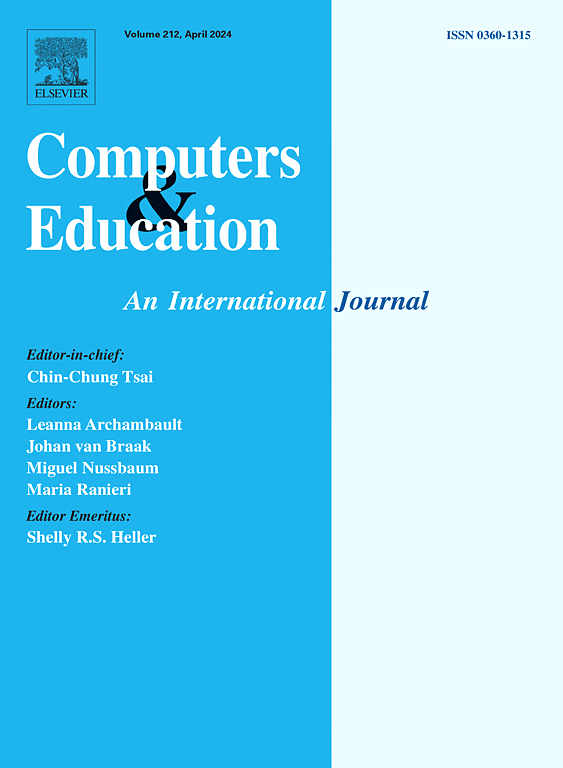教育游戏化中的个性化:具有不同特质竞争力的学习者从排行榜的排名中获益不同
IF 8.9
1区 教育学
Q1 COMPUTER SCIENCE, INTERDISCIPLINARY APPLICATIONS
引用次数: 0
摘要
排行榜是最常见的游戏元素之一,被广泛应用于教育游戏化中。然而,大多数研究主要是比较使用排行榜和不使用排行榜的学习情景,而忽略了排行榜的特定组成部分(如排名)的作用。鉴于学习者对排行榜的看法取决于其排名,本研究调查了排名(高与低)和学习者的特质竞争力(高与低)如何影响教育游戏化中的学习。61名特质竞争力高的学习者和62名特质竞争力低的学习者被随机分配到高排名或低排名条件下。结果显示,特质竞争力在排行榜排名与学习之间起到了调节作用。有趣的是,高排名更有利于提高低特质竞争力学习者的学习积极性,而低排名则对高特质竞争力学习者的学习成绩有更积极的影响。此外,负面情绪对排名和学习成绩之间的关系起到了中介作用,而学习动机的中介作用只对特质竞争力低的学习者显著。这些研究结果对根据学习者的特点设计有效的游戏化学习环境的意义进行了讨论。本文章由计算机程序翻译,如有差异,请以英文原文为准。
Personalization in educational gamification: Learners with different trait competitiveness benefit differently from rankings on leaderboards
Leaderboards are among the most prevalent game elements and are widely used in educational gamification. However, most research has primarily compared learning scenarios using leaderboards with those not using leaderboards, ignoring the role of specific components of leaderboards such as rankings. Given that learners’ perceptions of leaderboards depend on their rankings, this study investigated how rankings (high vs. low) and learners’ trait competitiveness (high vs. low) influence learning in educational gamification. Sixty-one high-trait-competitiveness and sixty-two low-trait-competitiveness learners were randomly assigned to either high-ranking or low-ranking conditions. The results revealed the moderating role of trait competitiveness in the relationship between leaderboard rankings and learning. Interestingly, higher rankings were more beneficial in enhancing learning motivation of learners with low trait competitiveness, while lower rankings had more positive effects on performance of those with high trait competitiveness. Additionally, negative emotions mediated the relationship between rankings and learning performance, while the mediating effect of learning motivation was only significant for learners with low trait competitiveness. The implications of these findings for the design of effective gamified learning environments based on learners’ characteristics were discussed.
求助全文
通过发布文献求助,成功后即可免费获取论文全文。
去求助
来源期刊

Computers & Education
工程技术-计算机:跨学科应用
CiteScore
27.10
自引率
5.80%
发文量
204
审稿时长
42 days
期刊介绍:
Computers & Education seeks to advance understanding of how digital technology can improve education by publishing high-quality research that expands both theory and practice. The journal welcomes research papers exploring the pedagogical applications of digital technology, with a focus broad enough to appeal to the wider education community.
 求助内容:
求助内容: 应助结果提醒方式:
应助结果提醒方式:


